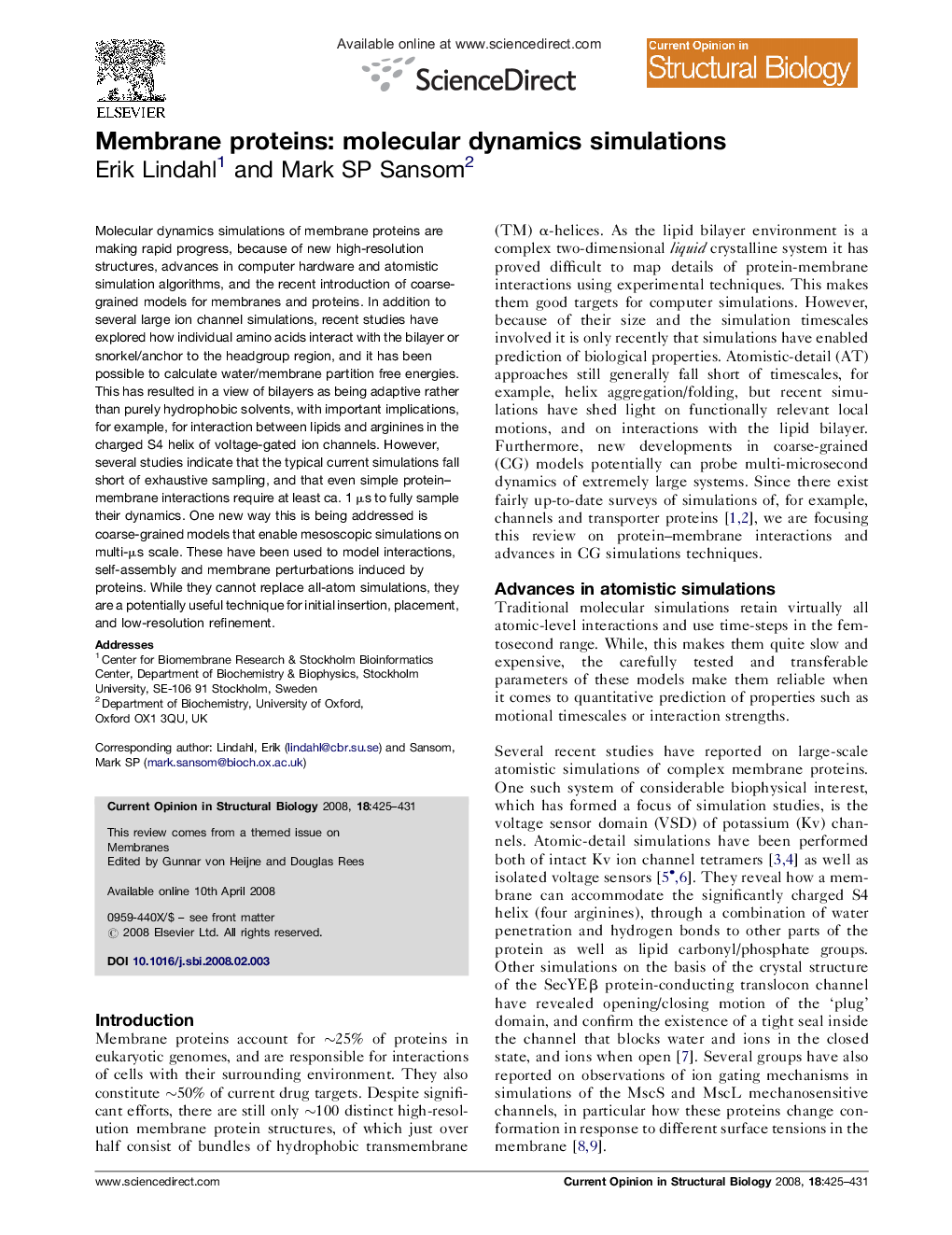| Article ID | Journal | Published Year | Pages | File Type |
|---|---|---|---|---|
| 1979665 | Current Opinion in Structural Biology | 2008 | 7 Pages |
Molecular dynamics simulations of membrane proteins are making rapid progress, because of new high-resolution structures, advances in computer hardware and atomistic simulation algorithms, and the recent introduction of coarse-grained models for membranes and proteins. In addition to several large ion channel simulations, recent studies have explored how individual amino acids interact with the bilayer or snorkel/anchor to the headgroup region, and it has been possible to calculate water/membrane partition free energies. This has resulted in a view of bilayers as being adaptive rather than purely hydrophobic solvents, with important implications, for example, for interaction between lipids and arginines in the charged S4 helix of voltage-gated ion channels. However, several studies indicate that the typical current simulations fall short of exhaustive sampling, and that even simple protein–membrane interactions require at least ca. 1 μs to fully sample their dynamics. One new way this is being addressed is coarse-grained models that enable mesoscopic simulations on multi-μs scale. These have been used to model interactions, self-assembly and membrane perturbations induced by proteins. While they cannot replace all-atom simulations, they are a potentially useful technique for initial insertion, placement, and low-resolution refinement.
